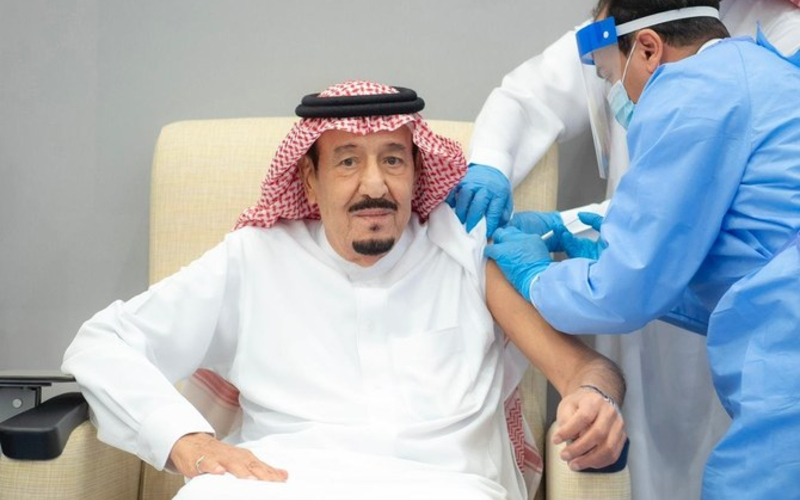One Year of COVID-19 in the Middle East and North Africa: The Fate of the 'Best Performers'
After a positive initial response, many countries were hit hard by the second wave and face challenges securing vaccines.

Published by The Lawfare Institute
in Cooperation With

Editor’s Note: This article originally appeared on Order from Chaos.
One year after countries in the Middle East and around the world declared national health emergencies due to the coronavirus pandemic, hundreds are protesting in Jordan following the death of at least six COVID-19 patients due to hospital oxygen shortages. Elsewhere in the Middle East and North Africa (MENA) region, some states are faring relatively well: Six ranked among the 20 countries that have administered the most COVID-19 vaccines per 100 residents (Israel, with 103.6 doses per 100 residents; the United Arab Emirates, with 66.9 doses; Bahrain, with 33.6; Morocco, with 15.6; Qatar, with 13.4; and Turkey, with 13.2).
A closer look at the cases of Morocco, Tunisia, and Jordan reveals that the initial best performers in the MENA region benefited early on from strong and proactive measures, but then struggled to control the outbreak during the second wave as they eased restrictions in favor of recovering their economies. These countries now face the challenge of securing and administering vaccine doses to a majority of their populations to limit the spread of the outbreak and the loss of life.
Strong Initial Response
Morocco, Tunisia, and Jordan had broadly similar responses to COVID-19, likely due to their structural similarities: They are middle-income economies with strong coercive apparatuses, with public health systems and economies that could not sustain the pressures of a prolonged outbreak. During the initial period of the pandemic, between March and September 2020, they managed the medical emergency well, thanks to strong and proactive security and public health responses.
As a result, compared to many of their regional neighbors, Morocco, Tunisia, and Jordan maintained relatively low numbers of cases and deaths during the initial phase of the outbreak (see figure below). In fact, between March and August 2020, these countries were three of the best performers in the MENA region in terms of infections and deaths, comparing favorably with global leaders such as Australia and South Korea. At this point, Jordan consistently reported under 10 infections per million people per day. Tunisia reported under 20 new daily cases per million people during this timeframe. Morocco’s daily new infections per one million people were also controlled, and never surpassed 40 before September 2020.
This success was largely due to their strong initial security and public health responses. Jordan, Tunisia, and Morocco adopted some of the strictest security responses of any country in the region. All three declared a state of national emergency as early as March 2020, closed borders and suspended flights, shut down schools, imposed curfews, banned public gatherings, implemented a mandatory general lockdown, and imposed strict social distancing. Across the three countries, these measures were implemented effectively (despite some regional disparities in Morocco’s case) and communicated extensively with the public on a daily basis.
Another major strength shared by these three countries was their effective institutional coordination of their COVID-19 response. Tunisia, which boasts one of the most advanced health systems in the MENA region, had strong pre-existing institutions such as the National Observatory of New and Emerging Diseases as well as national and regional committees in charge of disaster prevention and response. The government also created a special committee—the National Coronavirus Response Authority—to deal with the epidemiological aspects of the outbreak and coordinate between other institutions. Jordan, too, benefited from strong pre-existing structures, notably the National Committee for Epidemics, which led its response against the pandemic and advised the government on strategy. Similar to Tunisia, another body was created—the Coronavirus Crisis Cell—within an existing management body, which aimed to manage and coordinate institutions and responses during national crises. In Morocco, two committees were created in March 2020 to deal with the health and economic dimensions of the pandemic, respectively. While these struggled with poor communication with the public regarding their decisions, they successfully advised the regime on economic and health policy, including on securing doses of the vaccine early on.
Second Wave and Vaccine Race
Similar to many countries within and beyond the MENA region, Morocco, Tunisia, and Jordan only benefited from their strong responses during the initial stage of the outbreak. As the outbreak and associated measures exacerbated their already fragile economies, all three countries eventually came under pressure to strike a balance between easing restrictions to save the economy and limiting the loss of life. As they struggled with mitigating the health and economic dimensions, the medical situation devolved into a worrying and uncontrolled outbreak, stretching the public health sector beyond capacity.
The numbers of infections and deaths spiked between September and January in the three cases, though Morocco has controlled these numbers since January, followed by Tunisia since February (see figure). Infections in Jordan, however, have peaked in March 2021: It reported 9,535 new cases on March 17, compared to 766 in Tunisia and 466 in Morocco.
Today, Morocco, Tunisia, and Jordan hope to contain the outbreak by vaccinating a majority of their populations; they aim to do this in or by the spring of 2021. However, they will face major obstacles, primarily because of vaccine insecurity and uncertainty at a global level, as the difficulty has now shifted from developing successful and safe vaccines to producing and buying them.
So far, 193 countries have ordered over 20 billion vaccine doses to be delivered by the end of 2021. By comparison, the production capacity of all the vaccines in that timeframe stands at 9.2 billion doses. This means that many countries will have to wait one to two years to vaccinate the majority of their populations and control the spread of the outbreak. In the meantime, rising infections and deaths will stretch these countries’ public health systems beyond capacity and stress their already fragile economies.
Indeed, even Morocco—which pre-emptively secured vaccine stocks and has already vaccinated 5.7 million people (out of a goal of 25 million) in around six weeks—faces the issue of depletion of vaccine stocks and difficulty accessing new stocks. For Tunisia, which has administered 0.02 doses per 100 people so far, the difficulty has been securing any stock, and it has only done so in mid-March 2021. Jordan has administered around 200,000 doses since it began its campaign one month ago (i.e., 2 doses per 100 people). It is set to receive 2.2 million doses within the month, which will allow it to speed up its vaccination program. The latter may be complicated by Jordan’s sizeable refugee population; the kingdom is the first country in the region to have begun vaccinating refugees.
Outlook: Upgrading the Public Health Sector
On that note, the last 12 months of battling the coronavirus pandemic have highlighted significant gaps that must be addressed in the Moroccan, Jordanian, and Tunisian public health sectors. All of them are currently stretched beyond capacity given limited intensive care units and equipment, regional disparities in terms of access to health care, and the shortage of medical professionals.
Once the outbreak is under control, these governments will have to allocate greater resources for public health, invest in training more medical workers, expand emergency wings and intensive care units, increase the number of hospital beds, improve data and surveillance, place greater emphasis upon prevention, and adopt reforms that will address regional inequality in terms of healthcare. In the meantime, they must urgently secure further vaccine stocks and double down on social distancing measures to avoid further loss of life.





